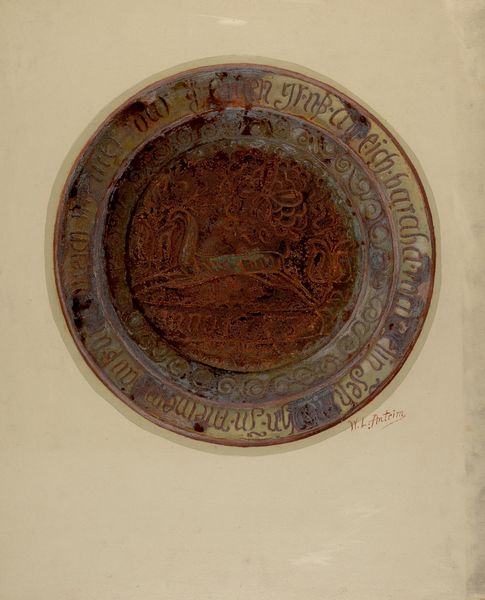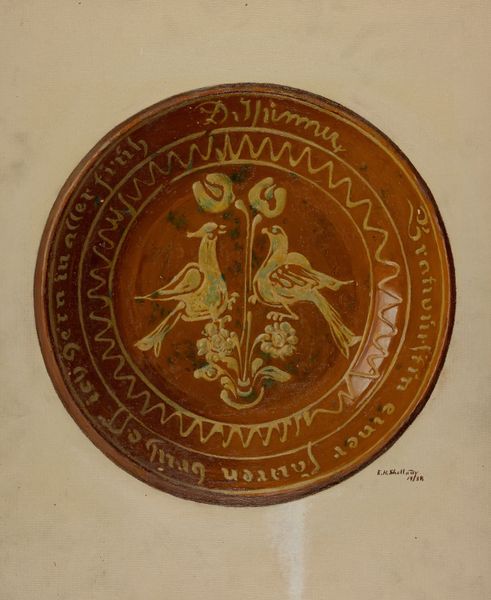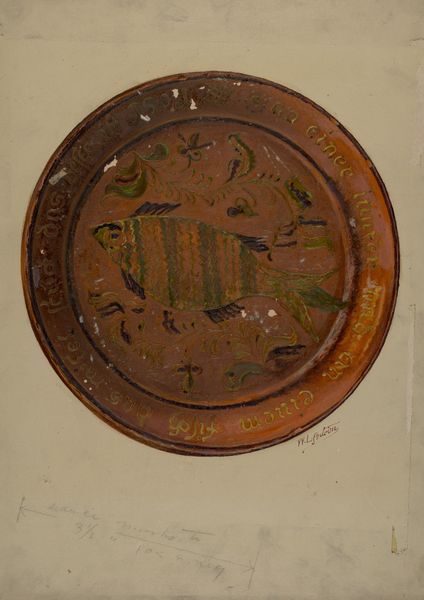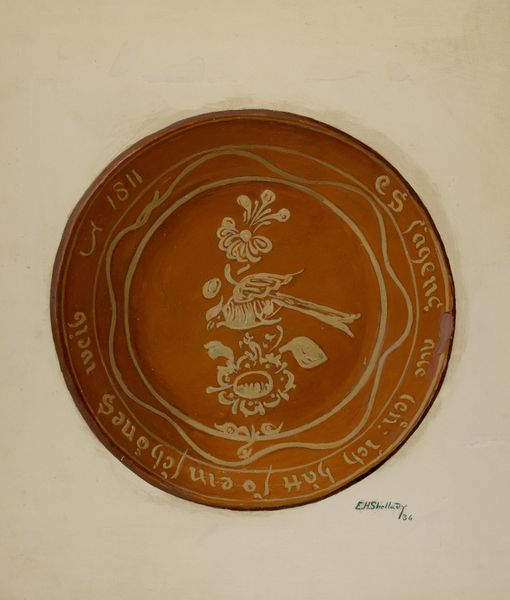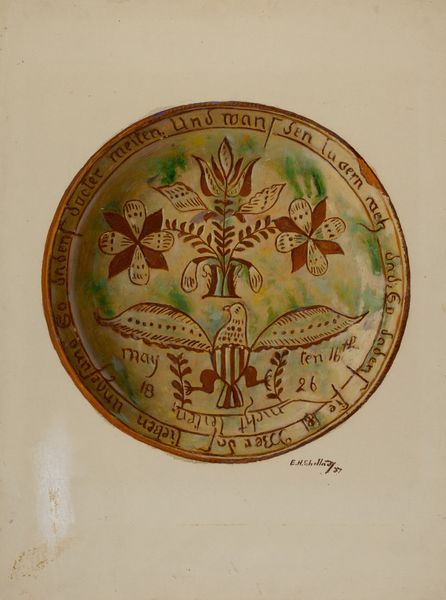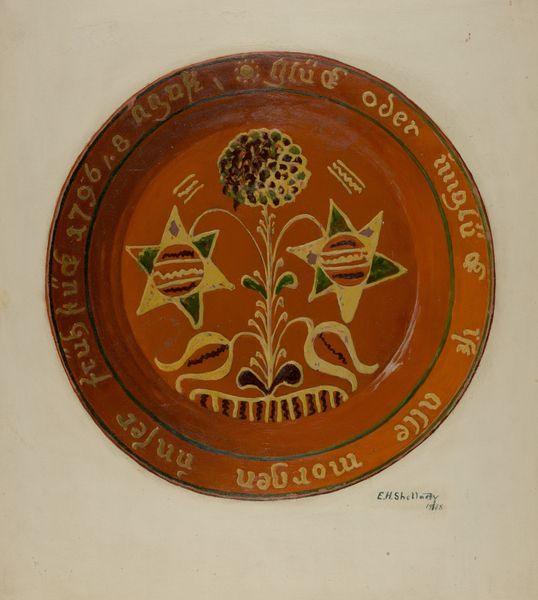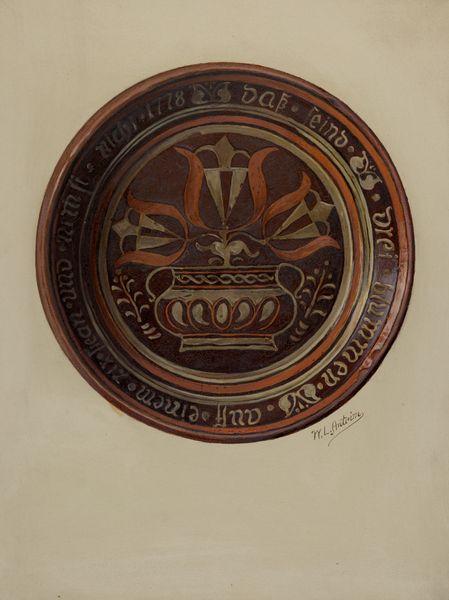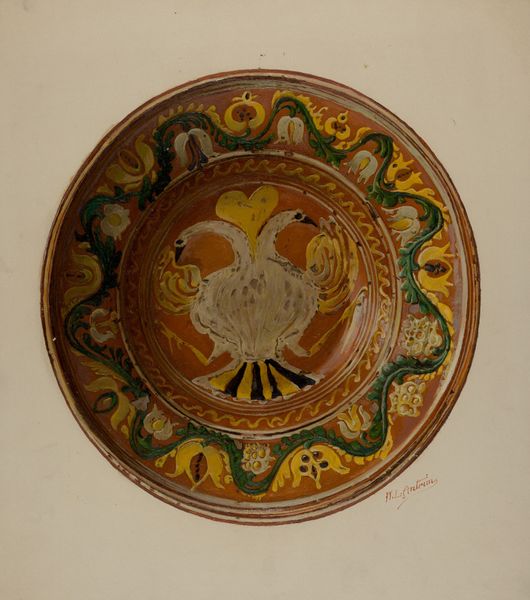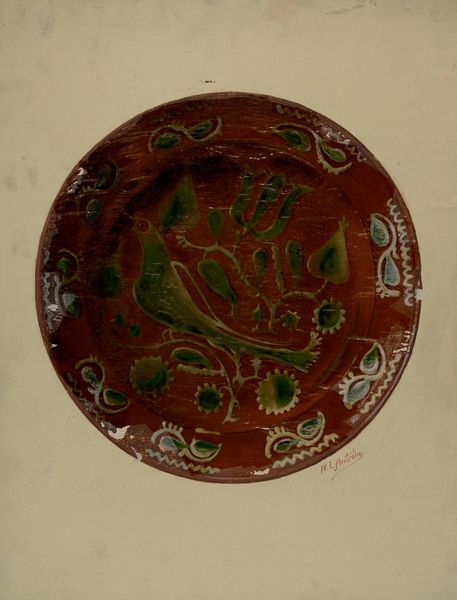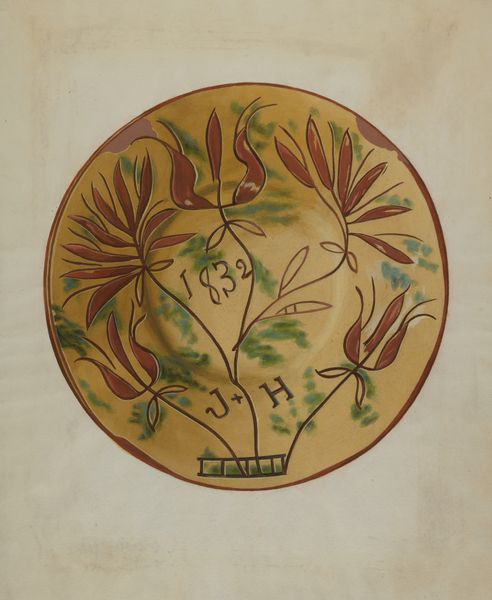
print, ceramic, watercolor, earthenware
# print
#
ceramic
#
watercolor
#
earthenware
#
folk-art
#
ceramic
#
decorative-art
#
watercolor
Dimensions: overall: 50.7 x 38.3 cm (19 15/16 x 15 1/16 in.) Original IAD Object: 14" in diameter
Copyright: National Gallery of Art: CC0 1.0
Curator: This is a watercolor and possibly print rendering of a "Pa. German Plate," dating from around 1938 and signed by William L. Antrim. It depicts what appears to be an earthenware ceramic. The work evokes a sense of traditional craftsmanship. What stands out to you initially? Editor: There’s a powerful folk-art simplicity to it. That bird at the center—it immediately calls to mind symbols of good luck and blessings. And that stylized foliage? Almost like something out of a medieval bestiary. Curator: Absolutely. It is clearly within the realm of Pennsylvania German folk art. Think about the means of its production – watercolor on perhaps printed design, referencing earthenware. This work bridges high art and the everyday, gesturing to the handmade objects that filled homes. We can speculate how Antrim saw the relationship between the artistic representation and the labor behind crafting actual earthenware pieces. Editor: The visual vocabulary draws deeply from cultural memory. Birds often symbolize the soul or divine messengers. The encircling text – presumably a blessing or motto in German, which reminds me of enduring cultural connections—emphasizes that continuity. It suggests not just decoration, but the imbued wishes for the owner of a piece of pottery. Curator: The execution really emphasizes process and materiality. Look closely – that terra cotta color isn’t perfectly uniform. I see it hinting at the variable firing conditions of traditional kilns and acknowledging material realities of production itself. Was it also printed? It almost reads as transferware from England, with German symbology in its center. Editor: The earthy palette—that warm brown—certainly resonates with Pennsylvania German aesthetics. There is something intrinsically comforting, homey even, embedded in these familiar colors and emblems. The bird doesn’t feel merely decorative; it's a layered symbol, pregnant with accumulated meaning across generations. Curator: I agree. So in a way, Antrim captured a fleeting moment of industrial production married with deep material culture. How it evokes that is the crucial component of his work. Editor: For me, this plate’s symbolic power lies in its capacity to make past cultural memories vividly present. Curator: Ultimately, the process of making is front and center. It asks us to consider that link between material culture and personal expression.
Comments
No comments
Be the first to comment and join the conversation on the ultimate creative platform.

